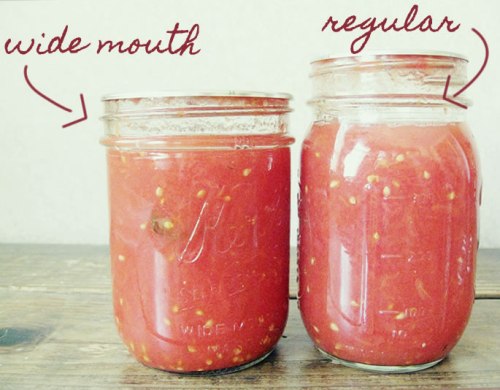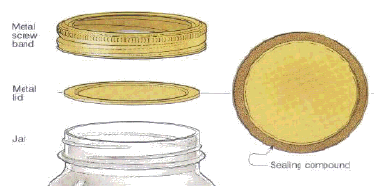FREE: 10 Must-Know Tomato Growing Tips Get The Guide
Read our affiliate disclosure here.
Canning Supplies You Need to Can Tomatoes
Since 2010, Tomato Dirt has garnered 4.8+ million views, making it the web’s leading online source for growing tomatoes in the home garden. Award-winning writer and Tomato Dirt owner Kathy Widenhouse has helped thousands of home gardeners grow healthier tomatoes. Be one of them when you get Tomato Dirt’s Growing Guide here.
Updated 8.5.24
What canning supplies do you need for canning tomatoes?
Naturally, you need a canner – either a hot water bath
canner or a pressure canner. (There are benefits to each. Read about both canners here and decide which is best for you.)
Beyond that, you will need just a few items to help with the process.
These items are available individually. In addition, some are sold as part of a set when you purchase a canner. Nearly all are one-time purchases. Only canning lids need to be replaced each year when you can tomatoes.
Canning Jars
Canning jars, also known as mason jars, are created specifically for canning. They come in several standard sizes, including quart (4 cups), pint (2 cups), half pint (1 cup) and 4 ounces (1/2 cup). The most common canning jar brands today are Ball, Mason, and Kerr.
The mouth of a canning jar has screw threads on its outer perimeter to accept a metal ring (also called a band.) The ring, when screwed down, presses a separate metal disc-shaped lid against the rim of the jar, which seals as part of the canning process. (See more information about canning lids and rings below.)
Jars are available in wide mouth (diameter: 3 inches) and regular or narrow mouth (diameter: 2 3/8 inches.) You can use either type of opening for canning tomatoes. Many gardeners find the wide mouth jars easier to use and slightly less messy when it comes to transferring tomatoes in and out of the jar.
Canning jars are made of soda-lime glass, a type of glass similar to window glass, but slightly higher quality. Further, the glass in canning jars is thicker than the glass used in regular commercial jars and is designed for repeated use year after year. Regular commercial jars – those that are used for mayonnaise, pickles, or relish, for example – are designed for a single use, are less resilient, and are more prone to crack in heat and under pressure than canning jars. For these reasons, the National Center for Home Food Preservation discourages using commercial jars for home canning.
Canning Lids and Canning Rings
Canning jar lids are thin, flat, round metal lids with a rubber band on the underside. After you fill the jar with tomatoes and set the lid on top, you secure the lid to the jar with a ring (a metal band that screws onto the jar’s threads). In the course of processing, the rubber on the lid seals against the top of the jar.
After a jar seals, you may leave rings on jars or remove them – and the jar remains sealed. Rings and lids usually come with new jars. They are also sold separately. Replacement lids can be purchased with or without extra rings. Lids are intended for single use when canning. Rings are reusable.
Canning Jar Rack
A jar rack is made of wire and is constructed with sections that hold jar securely in the canner. The rack’s arms hook over the sides of the canner, suspending the rack over the boiling water as you load it with jars. Once the rack is full, you can safely lower it into the boiling water. The rack is structured so that when lowered into the pot, the canning jars rest above the bottom of the pot, allowing the water to circulate on all sides. When it comes to canning supplies, a jar rack is a key tool in safe canning. If jars rest directly on the bottom of the pot, they can crack open.
Most new canners come with a canning jar rack. Set up and use of a canning rack is the same for both hot water bath canners and pressure canners.
You may need to replace your canning rack from time to time, primarily because of rust. They are available individually. Canning jar racks are available in rustproof aluminum, chrome-plated, and stainless steel.
As an alternative to using a canning jar rack, you can set several jar rims together on the bottom of the pot and set filled jars on rims for processing. This will keep the jars from resting on the bottom of the pot. However, jars will not be as secure when processed in this way. Tomato Dirt’s best recommendation: use a canning jar rack.
Canning Jar Lifter
A jar lifter looks like a set of very wide tongs with a rounded end coated in rubber. The lifter’s ends fit nicely over a canning jar top, allowing you to securely grip the jar from the pot of boiling water and transfer it to the cooling area without slipping. A jar lifter is a must-have tool for safe canning.
Canning Lid Lifter
A lid lifter also looks like a set of tongs. The magnet on its end allows you to pluck canning lids out of boiling water and set them on the jar rims as you prepare to seal jars for processing. The lifter keeps lids sanitized during the canning process and prevents burned fingers.
Canning Jar Funnel
Also called a “wide-necked funnel,” this special cone-shaped utensil has a wider lower opening than a standard funnel, allowing you to pour tomato juice, chopped tomatoes, and tomato sauce easily into jars without a mess. The funnel can sit on top of jars securely. Canning jar funnels are very inexpensive and save time, hassle, and clean up. Although it’s a favorite in canning supplies, a wide-necked funnel is useful in an unlimited number of other kitchen tasks, too.
More on canning tomatoes
Canning tomatoes: the basics you need to know to get started ...
Canning tomatoes FAQs: Frequently Asked Questions ...
Tomato canners: which to use for canning tomatoes ...
How to choose a hot water bath canner for tomatoes ...
Get more tips on our Canning Tomatoes Pinterest board...
How to Store Tomatoes: A Gardener’s Guide ...
Return from What Canning Supplies You Need to Can Tomatoes to Tomato Dirt home
As an Amazon Associate and Rakuten Advertising affiliate I earn from qualifying purchases.
SHARE THIS PAGE:




